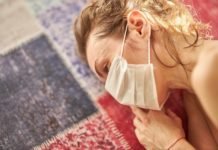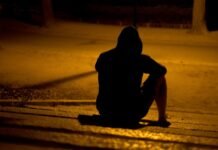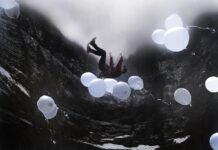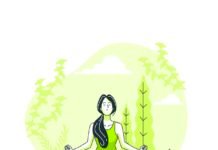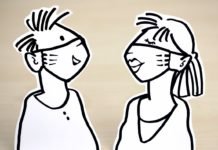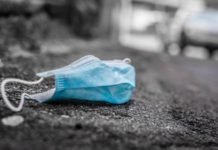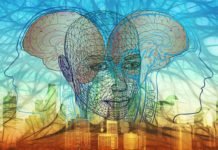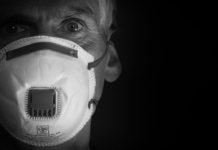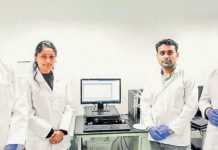A plausible approach has been made to expose pranayama as one of the important sub means or tool of holistic approach of Yoga to combat novel corona virus (COVID-19). Since, COVID-19 is a new virus, so it is quite natural that the therapeutic part of this infection has not been discussed systematically. Now it is running seriously for deciding the possibility of its curative and preventive measures. It is not essential to leave one’s house or go into oblivion to practice yoga. Yoga has a special role to play in this crucial situation of today. Its practice can remove mental and physical afflictions. Yoga can benefit all people under all circumstances of life. Pranayama helps to pure the respiratory problems and infections as well as enhance and maintain our immune system. It removes our stress, distress, anxiety due to infection or fear of infection.
In this pandemic situation, Corona Virus Disease 2019 (COVID-19) entire world is facing various types of innumerable psychological problems and distress. It is a highly infectious disease with a long incubation period which was caused by Sars-Cov-2 (Severe Acute Respiratory Syndrome Coronavirus 2). Due to technological advancement and fast mode of communication and transportation the distance between the people has been shattered. People can very easily move from one place to another. Contact between one person to another and group, is very common among human being consciously or unconsciously. We cannot say or estimate the exact number of contacted persons that a person meets daily. The number of COVID-19 patients increased dramatically due to hundreds and millions of people traveling across the country as well as world and entire world are facing great fatal existential consequences of this viral infection. The severity of COVID-19 had been underestimated until the National Health Commission classified it as a B type infectious disease officially and took actions to fight against this disease on 20 January, 2020. Ever since then, epidemic prevention was comprehensively upgraded and marked the real beginning of universal concern, indicating widespread impacts. The uncertainty and low predictability of COVID-19 is not only threatening people’s physical health, but also affect people’s mental health, especially in terms of emotions and cognition. Approximately more than two lakh and twenty five thousand people died of COVID -19 and 31 lakh have already infected from different parts of world (as on 26.04.2020). Due to intense nature of COVID-19, World Health Organization (WHO) has declared it pandemic. We have neither an exact medication nor vaccination for it, till date (29/04/2020). It started from Wuhan (China) since November, 2019 and speeded all over the world within very short time. No one country was ready, skilled or prepared medically, psychologically, socially, legally, politically for this panic emergency situation. How can we prevent or check to spread its infection is a big challenge for almost entire world. One social principle of Social -Distancing has been adopted by the whole world. It has been implemented forcefully and socially through Lockdown by the different countries. Individuals are personally contributing to maintain this social distancing. The scientists, medical practioners and researchers detected three main symptoms of COVID-19, like-fever, cough and respiratory problem. For preventive measures several general guidelines and instructions have been repeatedly conveyed to the common people by the different countries. The very broad common instructions are- maintain social distancing, wash hands repeatedly after short span of time for 20 seconds and /or use sanitizers, wear mask, Stay at home and stop our movement; so that possibility of spreading infection could be avoided and most importantly develop and maintain our immunity level.
As we know Greek philosopher Aristotle said “Man is a Social animal.” There are three types of life of a person -Biological, Intellectual and Social. Before Covid -19 the pattern of our social life was different. Due to implementation of preventive measures especially social distancing our pattern of life has been drastically changed. We can say that it is a paradigm shift in our pattern of life. There may be two types of changes- first, slow and gradual; & second, accidental or immediate in our social as well as personal life pattern. Generally, it goes slowly and gradually, but our pattern of life style has almost compelled to change accidently during and definitely it may continue even after COVID-19. Our social behaviour at work place, educational institutions, shopping places, social gathering, family rituals and functions like- birth, marriage and death rituals, tour and traveling behaviour, restaurant culture etc. have been almost shattered and drastically changed.
Whole world are waiting to restore the previous situation once again but we are not still on the conclusive state of restoration of previous life pattern. We are in dilemma that either we will control corona infection naturally, through development of natural immune system or artificially, through medication /vaccination or it may be happened that we will not be able to control the corona and will have to lead a life with this type of infection. If we control the infection then life will be stored once again. If it could not be controlled then the main issue is, what will be the life pattern of human being so that it could not destroy our existence. There are so many researches, webinar and discussions are going on all over the world to combat this disease. One another possibility is being discussed also in the society. In these discussions and webinar we realised the alarming echo of arrival of changing pattern of human life. An alternative and supplementary process are being searched for different domain of life i.e; health (physical and emotional), teaching-learning system as well as social relations etc.
It seems to be appear that at any cost either the situation has controlled or continued, we will have to change our life patterns i.e; behavioural pattern at home and work place, teaching- learning system, marketing systems, pattern of religious rituals , celebration of festivals, etc. Suffering from infection of novel corona virus is like a nuclear attack and the decision of social distancing, lockdown and other precautionary measures are giving different types of emotional breakdown and distress. According to Behavioural Immune System (BIS) theory people are likely to develop negative emotions like, aversion, anxiety, etc. and negative cognitive assessment for self-protection. Faced with potential disease threat, people tend to develop avoidant behaviours like, avoid contact with people who have fever and pneumonia-like symptoms and follow social norms strictly (e.g., conformity). According to stress theory and perceived risk theory, public health emergencies trigger more negative emotions and also affect cognitive assessment. These negative emotions keep people away from potential pathogens when it refers to the disease. However, long-term negative emotions may reduce the immune function of people and destroy the balance of their normal physiological mechanisms. Meanwhile, individuals may overreact to any disease in case of less appropriate guidance from authorities, which may result in excessively avoidant behaviours and blind conformity. Therefore, it is essential to understand the potential psychological changes caused by COVID-19 within due time manner. Since psychological changes caused by public health emergencies can be reflected directly in emotions and cognition, we can monitor psychological changes in time through emotional (negative emotions and positive emotions) and cognitive indicators (social risk judgment and life satisfaction).
We are facing two way attack of Novel Corona Virus Disease. Our Social thinkers, researchers, medical personnel, and academicians are continuously thinking and rethinking for probable pattern of life through rigorous rational analysis. Several steps have been taken by the government for preventing the viral infection, enhancing the human immune system and ensuring the management of different raised administrative, medical, social as well as legal problems during this crucial period. In fact a perfect health includes biological, psychological, as well as social aspect of a person. No means of treatment has capacity to treat such type of infectious disease in a perfect manner. But now days the Yoga has emerged as a most efficient curative as well as preventive therapy. Whole world is accepting its importance for our biological, psychological and social life. It has proved its scientific temper through observation and ensured our wellness in true sense in a large perspective. It is observed recently in the lectures and speeches of Sadhaka of Yoga and academician that the separate practice of only asana, pranayama or meditation does not satisfy our most of the expectation of true health. But it can satisfy our large expectation of wellness, if we use it comprehensively. Suggestions are coming to adopt a comprehensive approach to practice yoga so that we could fight against this infectious disease COVID-19 and its various painful consequences. Holistic approach includes different postures (asana), pranayama, meditation, yama (satya…), Niyama (sauch, tapas, swadyaya..), prayers, shat-karma, nutritional food habit (dietary supplements), day to day routine, use of medicinal herbs and plants, etc.
Pranayama means controlled, rhythmical and regular breathing. Praana means the vitality of life which expresses itself through the various centres of the body. Its simple meaning is breath. Pranayama means the regulation or the control the Praana, the vital energy consisting of three stages, the inhalation, the exhalation and the retention. Breath is life. One can live for some time without food but not without breathing. Swami Satyanand Saraswati, Bihar School of Yoga said, ‘Pranayama is indispensible for getting rid of the body toxin to avoid ailments resulting therefrom, and to strengthen the corresponding organs. One who practices pranayama becomes immune to such diseases (pneumonia, pleurisy, tuberculosis, diseases of throat, diseases of respiratory organ, influenza and other nasal problems)” (Dynamics of Yoga, p-49). Swami jee said “Like Asana Pranayama has both preventive and curative effects” (Dynamics of Yoga, P-51). By practicing Pranayama, the lungs become stronger and flexible. Heat is produced in the body which produces beneficial effects on general health. Oxygen is supplied to our body in large quantity; the greater intake of oxygen, the greater is the quantity of carbon dioxide expelled. Pranayama also produces a healthy and invigorating effect on the brain and nerves. It tones up the functioning of brain, dormant centres in the smaller and the greater brain energized, and latent potentialities awakened. Swami jee said, “An- all round development of pituitary and pineal glands is brought about by practicing pranayama regularly” (Dynamics of Yoga, p-50). According to Swami Satyanand Saraswati important Pranayams; are- Sukhpoorvak, samavet, sahita, Nadishodhan, Bhramari, Ujjaiee, Sheetali, sitkaari, Bhastrika, suryabheda, Suryabheda, Kevali, Plawini and Chaturtha. He discussed enormous benefits of Pranayama. There are various reliable sources and studies shows that it will be certainly beneficial to combat this crucial situation. COVID-19 (Corona Virus Disease 2019) has significantly resulted in a large number of psychological consequences. In fact, three types of treatment are being run in the society since long. – Curative (to cure a patient of illness), Palliative (to relieve symptoms from an illness) and Preventive/alternative and complimentary (to avoid the onset of an illness). In the preventive treatment several subs mean under the one broad umbrella of main preventive treatment are used.
Hence, a holistic approach should be adopted as a suitable means to combat coronavirus infection (COVID-19) on varieties of means have been utilised by the greater population of the world. We can conclude that holistic approach includes the eight limbs of Ashtaanga yoga, shat-karm (Neti, Dhouti,etc), meditation, Ayurveda supplements, nutritious dietary supplements etc. as an alternative and supplementary treatment. It is nobly beneficial against Novel Corona Virus 2019. There is accumulated evidence that point to the fact that yoga and meditation practice boosts immunity working at many levels including neural. Thus, it is important to practice a daily dose of postures (Asanas) and meditation to keep away anxiety, depression and attendant decrease in immunity. This is the only way to fight against this enemy COVID-19.
References
- Ackerman, J.M.; Becker, D.V.; Mortensen, C.R.; Sasaki, T.; Neuberg, S.L.; Kenrick, D.T. A pox on the mind: Disjunction of attention and memory in the processing of physical disfigurement. J. Exp. Soc. Psychol. 2009, 45, doi:10.1016/j.jesp.2008.12.008.
- G. Kirkwood, H. Rampes, V. Tukrey, J. Richardson, and K. Pilkington, “Yoga for anxiety: a systematic review of the research evidence,” British Journal of Sports Medicine, vol. 39, no. 12, pp. 884–891, 2005.
- Huang, C.L.; Wang, Y.M.; Li, X.W.; Ren, L.L.; Zhao, J.P.; Hu, Y.; Zhang, L.; Fan, G.; Xu, G.; Gu, X.; et al. Clinical features of patients infected with 2019 novel coronavirus in Wuhan, China. Lancet 2020, doi:10.1016/S0140-6736(20)30183-5.
- Houston, V.; Bull, R. Do people avoid sitting next to someone who is facially disfigured. Eur. J. Soc. Psychol. 1994, 24, 279–284, doi:10.1002/ejsp.2420240205.
- John, A.T.J.; Natalie, J.S.; Michael, A.M. The behavioral immune system and social conservatism: A metaanalysis. Evol. Hum. Behav. 2013, 34, 99–108, doi:10.1016/j.evolhumbehav.2012.10.003.
- K. Yang, “A review of yoga programs for four leading risk factors of chronic diseases,” Evidence-Based Complementary and Alternative Medicine, vol. 4, no. 4, pp. 487–491, 2007.
- K. Pilkington, G. Kirkwood, H. Rampes, and J. Richardson, “Yoga for depression: the research evidence,” Journal of Affective Disorders, vol. 89, no. 1-3, 2005.
- Kiecolt-Glaser, J.K.; McGuire, L.; Robles, T.F.; Glaser, R. Emotions, morbidity, and mortality: New perspectives from psychoneuroimmunology. Annu. Rev. Psychol. 2002, 53, 83–107, doi:10.1146/annurev.psych.53.100901.135217. 12
- Mortensen, C.R.; Becker, D.V.; Ackerman, J.M.; Neuberg, S.L.; Kenrick, D.T. Infection breeds reticence: The effects of disease salience on self-perceptions of personality and behavioral avoidance tendencies. Psychol. Sci. 2010, 21, 440–447, doi:10.1177/0956797610361706.
- Norris, F.H.; Friedman, M.J.; Watson, P.J. 60,000 disaster victims speak: Part II. Summary and implications of the disaster mental health research. Psychiatry Interpers. Biol. Process. 2002, 65, 240–260, doi:10.1521/psyc.65.3.240.20169.
- Paramahansa Swami Satyananda Sraswati & Parivrajika Ma yogashakti ,” Dynamics of YOGA” Edited by A.M. Patwardhan, Bihar School of Yoga, Monghyr, Bihar, 1966.
- R. P. Brown and P. L. Gerbarg, “Sudarshan Kriya yogic breathing in the treatment of stress, anxiety, and depression: part I—neurophysiologic model,” Journal of Alternative and Complementary Medicine, vol. 11, no. 1, 2005.
- Schaller, M.; Murray, D.R. Pathogens, personality, and culture: Disease prevalence predicts worldwide variability in sociosexuality, extraversion, and openness to experience. J. Personal. Soc. Psychol. 2008, 95, 212–221, doi:10.1037/0022-3514.95.1.212.
- Schaller, M.; Murray, D.R.; Bangerter, A. Implications of the behavioral immune system for social behavior and human health in the modern world. Philos. Trans. Biol. Sci. 2015, 370, 1–10, doi:10.1016/bs.aesp.2015.09.002
- S. Telles, N. Singh, and A. Balkrishna, “Managing mental health disorders resulting from trauma through yoga: a review,” Depression Research and Treatment, vol. 2012, Article ID 401513, 9 pages, 2012.
- Sijia Li 1,2, Yilin Wang 1,3, Jia Xue 4, Nan Zhao 1, and Tingshao Zhu 1, “he Impact of COVID-19 Epidemic Declaration on Psychological Consequences: A Study on Active Weibo Users” International Journal Environmental Research & Public, vol.2020,17,2032, pp 1-9.
- Taimini I.K. The Science of Yoga, 1974. The Theosophical Publishing House, Adyar, Madras, India


